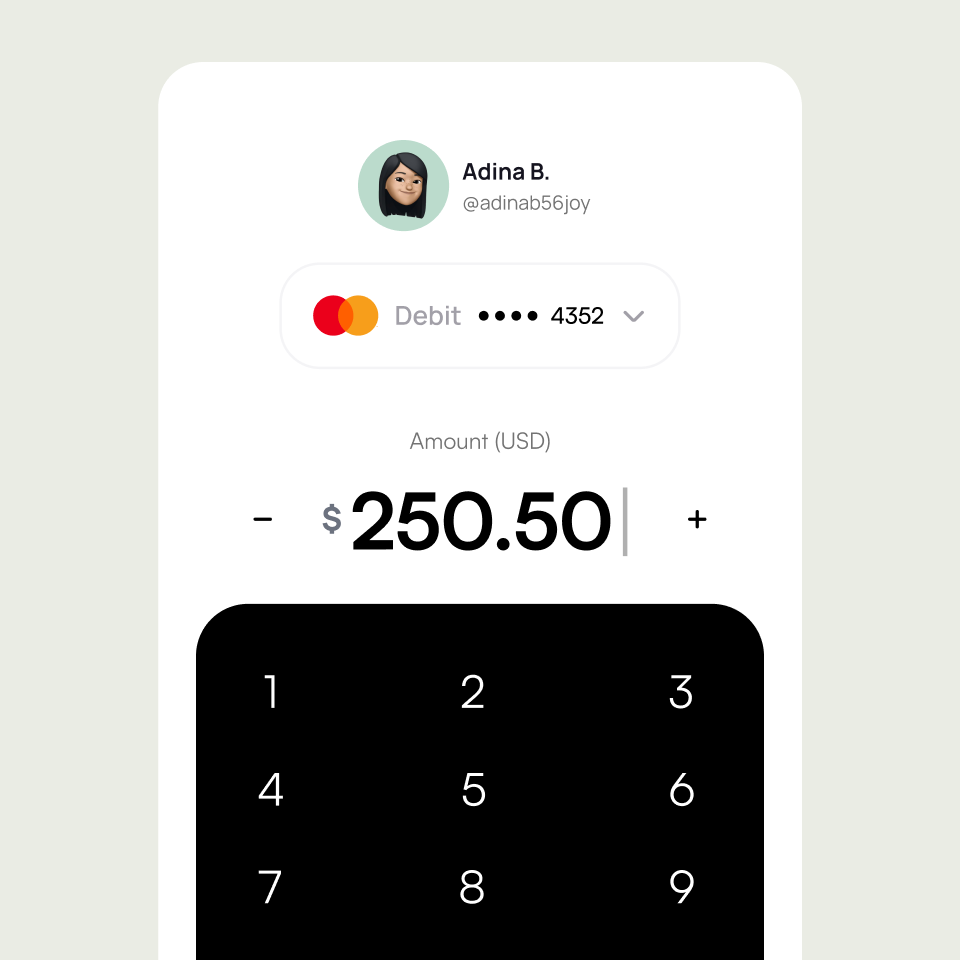Optimole is part of the Themeisle family, a trusted name in the WordPress ecosystem known for fast, user-first tools like Neve, a lightweight theme with over 300,000 active installs.
Themeisle’s plugins and themes are built around a core philosophy: clean UX, lean code and real-world usability.
That same design DNA powered Optimole’s revamp, not just a visual upgrade but a strategic move toward scalable, performance-focused UX.
Built for speed and simplicity, Optimole reflects Themeisle’s user-focused design values.
Optimole - From Fast Images to a Faster UX
Images can make or break web performance and in 2025, speed isn’t a luxury, it’s the standard. That’s where Optimole steps in: a smart WordPress plugin built for Wordpress users that want fast-loading sites, without the hassle.

Optimole uses smart image compression, serves them through a lightning-fast global CDN and adapts them in real-time for every device and screen.
So far, Optimole processes and optimised over 7 billion images, delivering 2x faster load times, up to 80% smaller files and a 40% drop in bounce rates.
Yet for all its technical strengths, Optimole’s user experience lagged behind, with confusing navigation and a cluttered layout that didn’t match the product’s speed or simplicity.
That’s when we partnered to do more than a design facelift.
We rebuilt the app and web site from the ground up: combining UX research, accessibility best practices, modern design systems and performance-first development, all tuned to real users.
The Challenge: Meeting Scalling Ambitions
What wasn’t working:
Optimole had a powerful product, but the app was falling short . As traffic grew, it became clear the experience needed to evolve:
- Messaging lacked clarity for new users,
- The layout was more busy than helpful,
- The backend wasn’t built to scale with the team’s momentum.
Who did we design for:
To focus the design process , we centered around a core persona: Sarah, the Performance-Minded WordPress Developer.

Sarah is a freelance dev juggling multiple client sites. She’s fast, efficient and needs tools that just work. No fluff. No digging through docs.
Before Optimole, she was stuck:
- Manually compressing images
- Using multiple tools for her workflow
- Worrying about bloated page sizes
- Wrestling with rigid plugins
- Struggling to explain performance wins to clients
“I need my sites to load fast, but I don’t have time to optimize every image manually.” – says Sarah, Freelance Developer
Her challenges became our design blueprint. Sarah needed:
- Clarity on what Optimole does
- A quick way to choose the right plan
- Reassurance that it’ll save her time, not take more of it
Internal feedback echoed the same: explain the value clearly, support power users and simplify the journey for everyone else.
Through research and analytics, we zeroed in on key friction points. This helped us identify critical UX pain points that were hindering user satisfaction and adoption:
- Unclear navigation – users didn’t know where to go next
- Buried features – key info was hard to find
- No clear calls to action – even interested users didn’t know the next step
All of this insights shaped a new goal: an experience built for ease and clarity just like the product it represents.
How We Worked - Efficient and User-Focused
Discovery: Listening First
Our UX research methods combined qualitative interviews, quantitative analytics and accessibility assessments to gather comprehensive insights
We kicked things off with deep listening, from user interviews to analytics and accessibility audits. The signal was clear: users needed a more intuitive experience and internal teams needed better alignment.
Cross-Team Collaboration
From day one, design, dev, content and marketing worked together. Collaborative sessions and async reviews kept everyone aligned and prevented downstream delays.

Rapid Prototyping, Real Feedback
We built and tested wireframes quickly, validating ideas first with the internal team and then with real users. This helped us fine-tune layout, messaging and flow early, based on actual behavior, not assumptions.

Clean Handoff, Clear Execution
Once designs were final, development moved smoothly. Shared Figma files, documented components and consistent naming conventions made handoff seamless and reduced build time by over 30%.
Strategic Design Goals
With strong research and cross-team focus, we prioritized what mattered most: performance users could feel, streamlined journeys and a foundation built for long-term growth.
This gave us a clear design roadmap, guiding phased improvements aligned with business objectives and user needs.
The Big Four:
- Usability First
Clean navigation, crisp typography, keyboard-friendly, screen reader-ready. Accessible by design. - Value, Instantly
Sharp messaging aimed at busy devs. No fluff, just clear benefits, fast. - Modern Visuals
A bold new look with breathing space, strong hierarchy and a consistent brand feel. - Speed You Can Feel
We cut layout shifts, simplified UI and used Optimole’s own tech to keep things lightning fast.

What That Looks Like:
- Smarter nav, fewer clicks
- Scalable UI components
- Smoother flows from landing to sign-up
Design System & Development Handoff
A great interface update isn’t just about what users see, it’s about setting up a system that grows with the product.
That’s why we built the new Optimole site as a living design system, not just a stack of static pages. Scalable, consistent and ready for what’s next.

A Component Library Built for Growth
To future-proof the product, we created a reusable UI component library: modular, responsive and accessible by design. These weren’t just styled blocks; they were smart building pieces designed to flex across screens and needs.
Each one was:
- Mobile-first and breakpoint-tested
- Fully accessible, with ARIA labels and keyboard support
- Modular and reusable, built for fast iteration
Think pricing tables, testimonials, CTA banners, feature blocks, all branded, consistent and ready to scale.

A Visual Language that Sticks
Optimole’s brand stands for three things: clean, fast and helpful. We built a design system that reflects that, consistent across every page and interaction:
- Purposeful color system for clarity and hierarchy
- Typography and spacing tokens for rhythm and flow
- Friendly, on-brand iconography and illustrations
The result? A seamless experience that carries from marketing site to product UI without missing a beat.

Designed in Figma, Built for Devs
Our Figma files weren’t just pretty, they were a dev’s best friend. Everything was documented with:
- Clear naming conventions and usage guidelines
- Layout and state specs for every component
- Interactive flows and Loom walkthroughs for context
No confusion. No back-and-forth. Just clean handoff and smooth implementation.
Scalable by Design
With this system in place, Optimole’s team can:
- Build faster with fewer bugs
- Maintain visual and UX consistency
- Roll out updates confidently
In short: fewer blockers, faster launches and a foundation that’s ready to grow right alongside the product.
Technical Enhancements
Optimole lives and breathes speed, so we made sure every piece of the site felt just as fast and smooth as the product itself.
By tapping into Optimole’s own real-time image optimization and global CDN and combining that with smart lazy loading and caching, we slashed load times and made the experience seamless across all devices.
Accessibility: Designing for Everyone
From the very beginning, accessibility wasn’t just a technical requirement for us, it was a core value. But the most powerful part of inclusive design? Seeing the real impact it had on real people.
This wasn’t just about checklists or audits. It was about making Optimole more usable, more welcoming and more human.
Before vs. After: Real Progress in Usability
The numbers told a compelling story:
- Accessibility scores jumped from 65 to 92+ across the board.
- Core Web Vitals improved and not just for power users, but for everyone.
- Users relying on keyboard navigation could complete tasks up to 40% faster after the design.

What Users & Team Members Said
Great design shows its true value in the way people experience it: in the ease, transparency and satisfaction it brings to real users, not just the numbers behind the scenes. When users feel the difference, that’s when the real impact shines through.
Users Felt the Difference
Once the new app went live, the response from users spoke volumes.
What stood out most?
Immediate performance gains, clear messaging and a sense of reliability.
Their feedback said it best; here’s how users described the impact:
Optimole simplifies image management on WordPress like no other. It optimizes images automatically, adapts them to any device, and improves site speed without sacrificing quality. Easy to use and highly effective—highly recommended!
Can recommend this plugin to everyone that is looking to speed up their website. This is a true gamechanger. Five stars for the team of Optimole.
The plugin not only optimized my images seamlessly but also enhanced the overall performance of my site. The automatic image compression and lazy loading features are especially noteworthy
Beyond the glowing reviews, we also saw the results reflected in the data:
- Faster average load times across key landing pages
- Improved SEO scores and Core Web Vitals
- Higher engagement and lower bounce rates
And the Team Felt It Too
Internally, the launch marked a major turning point. What had previously felt like a patchwork became a proper foundation for growth: one the Optimole team could build on confidently.
.webp)
"The redesigned dashboard resulted in significant improvements in user engagement and usability. Eleven Space was receptive to feedback and delivered items within the agreed timeline, proving their high level of professionalism and efficiency. " (Marius Cristea, Optimole CTO)
The development team appreciated the scalable component system and product stakeholders saw the value of UX-driven improvements reflected in user feedback and adoption metrics.
Lessons Learned & Best Practices
Every project teaches you something. Here’s what this one reinforced:
- Design around one clear user persona. When you focus on solving problems for your core user, clarity follows.
- Audit early and often. Performance and accessibility, as getting visibility early avoids downstream surprises.
- Think in systems, not screens. A flexible design system makes growth and iteration smoother.
- Work as one team. The best outcomes happen when design, dev and marketing are in sync from day one.
Conclusion
This smart design was a true transformation, aligning Optimole’s website with the powerful, performance-first product it supports.
By solving real user problems and building a scalable foundation, we delivered:
- Faster load times and smoother user experiences
- Clear, concise messaging that drives action
- Built-in accessibility that welcomes everyone
- A flexible design system ready for future growth
Most importantly, the Optimole team now has a site they can confidently scale, ensuring every update puts users first.
The result? 7 Billion, 695 Million, 504 Thousand images processed and counting.
But performance is more than a design detail, it’s a business advantage. It’s easy to overlook, but even a 1-second delay in page load time can drop your conversion rate by 7%.
For every extra second, bounce rates spike: over 50% of users will leave before your content even loads. That’s lost signups, missed trials and vanished revenue.
The good news? A fast, image-optimized site isn’t just for developers anymore.
With Optimole’s free WordPress plugin, you can compress images, deliver them through a global CDN and lazy-load them automatically with no code required.
With tools like Optimole, image optimisation becomes achievable, not overwhelming.



.webp)


